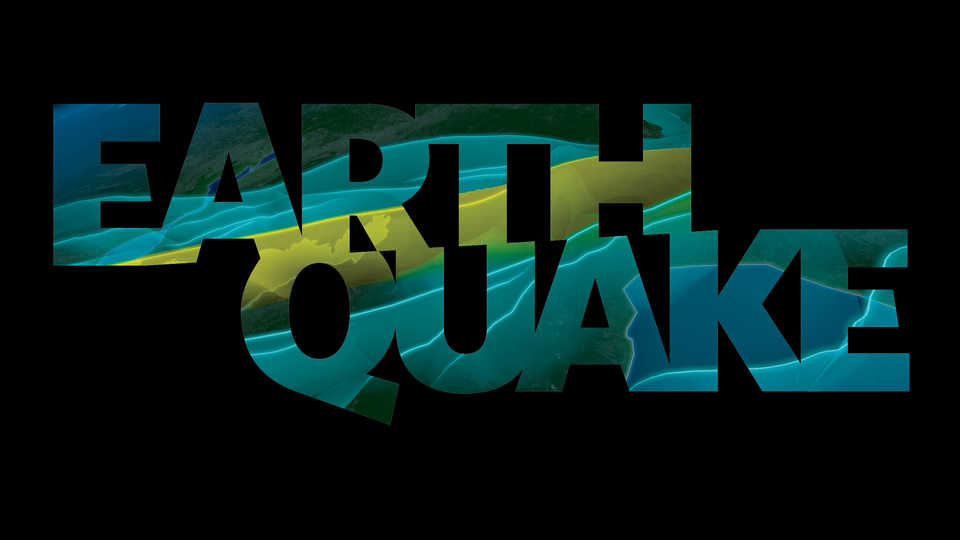A high-speed tour of the past 200 million years, narrated by Benjamin Bratt, will unearth the science behind our ever-changing planet

SAN FRANCISCO (May 23, 2012) — Brace yourself for a seismic experience. Earthquake: Evidence of a Restless Planet, will open at the California Academy of Sciences on May 26, 2012, launching audiences on a breathtaking tour through space and time. During the show, audiences will fly over the San Andreas fault before diving into the planet's interior, travel back in time to witness both the 1906 San Francisco earthquake and the break-up of Pangaea 200 million years ago, and much more. Concurrently, an 8,000-square-foot exhibit will debut in the west hall of the Academy, featuring large-scale installations such as a walk-through model of the Earth, an enclosure for live baby ostriches (yes, there are surprising connections between earthquakes and ostriches!), an earthquake simulator resembling an old Victorian home, and an interactive space designed to teach earthquake preparedness.
Planetarium Show Overview
Following its first two award-winning productions, Fragile Planet and Life: A Cosmic Story, Morrison Planetarium will premiere Earthquake: Evidence of a Restless Planet on May 26. The 30-minute show is narrated by Emmy-nominated actor and Bay Area native Benjamin Bratt.
"Our all-digital planetarium has the ability to present complex topics—such as earth processes and the slow march of geological time—within a very visual, immersive environment," said Ryan Wyatt, Director of Morrison Planetarium and Science Visualization. "The new show harnesses the latest techniques in data-driven visualization to help visitors understand earth processes and think differently about living on our dynamic planet."
Starting at Point Reyes in Northern California, the show flies south along the San Andreas Fault until it reaches San Francisco. The Golden Gate Bridge fades away as the clock rewinds to 1906. The audience experiences an all-digital recreation of the 7.9-magnitude earthquake, followed by a scientific dissection of the event—including views of the underground fault plane and the propagation of seismic energy waves based on supercomputer simulations. Guests then embark on a high-speed tour of the past 200 million years, witnessing the formation of the Atlantic Ocean, flying over the cradle of humanity in Africa's Great Rift Valley, and visiting sites of historic earthquakes in India, China, and Japan—including the 9.0-magnitude Tohoku earthquake and tsunami in March 2011. A planetarium presenter will bring audiences even more up-to-date during a live portion showcasing the latest seismic events happening around the planet—underscoring the fact that earthquakes big and small occur constantly. The show ends with a look at the modern building strategies used by scientists and engineers for a safer and better prepared future.
The Academy's visualization studio, whose members have 180 years of collective experience in the TV and film industries, spent the past 17 months and processed 175 terabytes of digital information to make Earthquake. The opening scene in 1906 San Francisco required painstaking research into historical photographs, insurance maps, and personal accounts to ensure that every detail, down to the names of stores on Market Street and the types of vessels sailing into San Francisco Bay, was as accurate as possible.
The production team also filmed on location at McClure's Beach in Point Reyes, City Hall and the Ferry Building in San Francisco, and the Pacific Earthquake Engineering Research Center in Richmond, California, for various scenes in the show. High-resolution photography from these locations was grafted onto three-dimensional frameworks built in computer software, resulting in highly immersive environments when projected onto the planetarium's 75-foot-diameter screen.
With a basis in real data, the show draws heavily from the expertise of key scientific partners. For example, Lawrence Livermore National Laboratory (LLNL) provided accurate ground motion visualizations for the 1906 earthquake, ground motions for a hypothetical earthquake on the Hayward Fault, visualizations of seismic waves traveling through the Earth, and a temperature map of Earth's interior based on scientific evidence.
"The LLNL team is happy to have contributed simulation data to the show and thrilled to see the results in such a stunning visual form," said Dr. Arthur Rodgers, a seismologist at LLNL. "It's also satisfying to know that many people might learn something they didn't know about earthquakes or plate tectonics through work done at LLNL."
In addition, the U.S. Geological Survey provided detailed topographic and geologic information for California state and data for the 1906 earthquake. Planetarium presenters will use Microsoft Research WorldWide Telescope, an interactive tool for visualizing earth and sky, to show real-time earthquakes around the world during the live portion of the show. And NOAA contributed a dramatic simulation of the March 2011 tsunami moving across the Pacific.
The Earthquake planetarium show will play several times daily during 2012-2013. A video trailer is available on YouTube.
The production was generously underwritten by Ann L. and Charles B. Johnson, in tribute to former California Academy of Sciences President and Fellow Bruce A. Bolt for his contributions to seismology and public safety.
The California Academy of Sciences is home to Steinhart Aquarium, Morrison Planetarium, Kimball Natural History Museum, and world-class research and education programs—all under one living roof. Admission to the Academy is: $29.95 for adults; $24.95 for youth ages 12 to 17, Seniors ages 65+ and students with valid ID; $19.95 for children ages 4 to 11; and free for children ages 3 and younger. Admission fees include all exhibits and shows. Hours are 9:30 am - 5 pm Monday - Saturday, and 11 am - 5 pm on Sunday. During peak periods, including some holiday weekends, an admission surcharge and extended hours may apply. Visit www.calacademy.org or call (415) 379-8000 for more.
Press Contacts
If you are a journalist and would like to receive Academy press releases please contact press@calacademy.org.
Digital Assets
Hi-res and low-res image downloads are available for editorial use. Contact us at press@calacademy.org to request access.